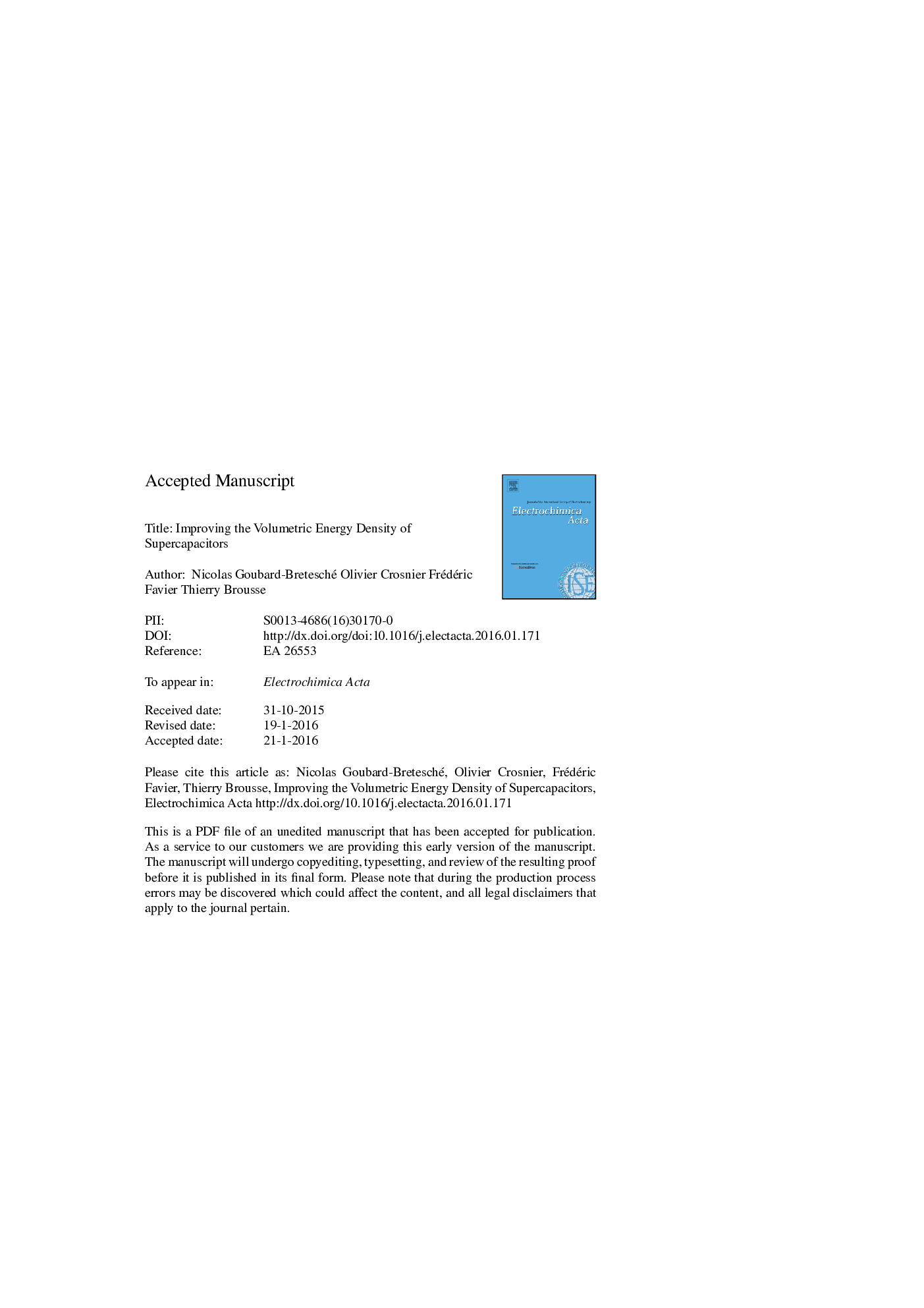| Article ID | Journal | Published Year | Pages | File Type |
|---|---|---|---|---|
| 6607424 | Electrochimica Acta | 2016 | 23 Pages |
Abstract
Due to the low double-layer capacitance of activated carbons (<20 μF cmâ2) and to their low density related to their large micro/meso porosity, the volumetric energy density of commercial supercapacitors remains low. Therefore, the use of pseudocapacitive oxides or nitrides as electrode materials can drastically improve the volumetric performance. However, there is currently a lack of reliable tools to extrapolate the performance of a 1 cm2 electrode to a real life cell of several thousand farads. In this paper, we provide a calculation tool to extrapolate the cell capacitance and the energy density both from a gravimetric and volumetric point of view in a 399 cm3 device. The calculation datasheet indicates that in order to improve the volumetric energy density of supercapacitors, it is crucial to lower the electrodes porosity down to 30-40%. Similarly, the use of high-density pseudocapacitive oxides greatly enhances the volumetric energy density of the related devices. Combining both parameters (porosity of 30%, density of 4.5 g cmâ3, active material capacitance of 250 F gâ1) can lead to a 28000 F device compared to only 3000 F for a commercial cell of the same volume. The design of asymmetric aqueous devices by combining two high-density pseudocapacitive oxides with reasonable specific capacitance (â100 F gâ1) is also an interesting way to further improve the cell voltage and subsequently the volumetric energy density. Additionally, the use of aqueous electrolytes enhances the safety of the cells. Finally, the provided spreadsheet will help to envision different associations of pseudocapacitive and/or capacitive materials and to predict their performance when used in real life cells.
Related Topics
Physical Sciences and Engineering
Chemical Engineering
Chemical Engineering (General)
Authors
Nicolas Goubard-Bretesché, Olivier Crosnier, Frédéric Favier, Thierry Brousse,
